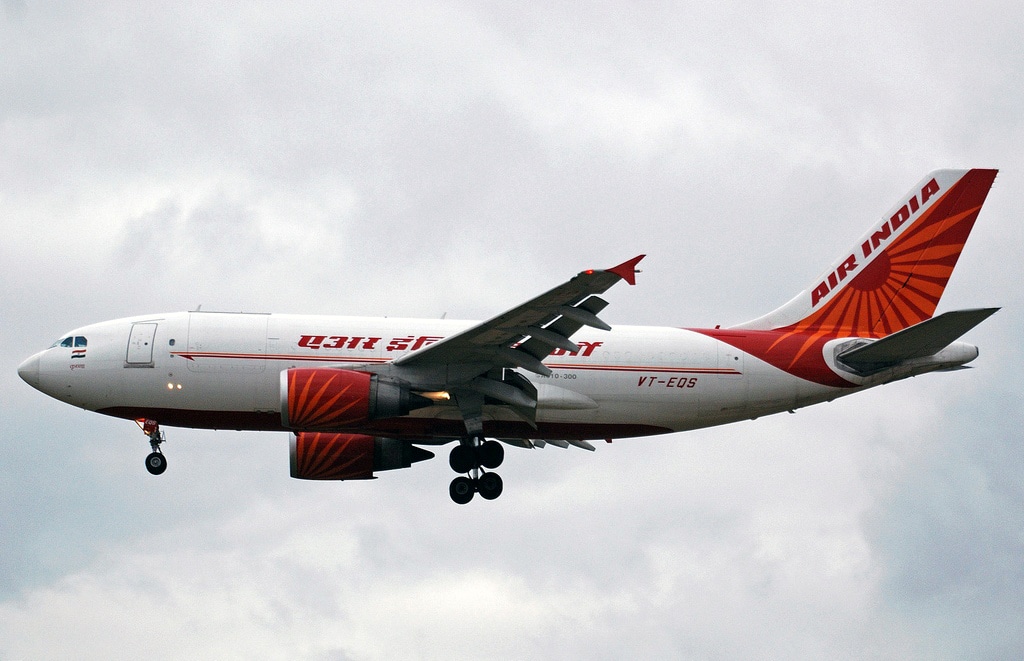Airlines
Air India eyes 300% growth in cargo capacity in next 5 years

The largest airline in India and a Star Alliance member, Air India, is preparing to play a significant part in enhancing the freight and cargo ecosystem both domestically and internationally. Recent initiatives will help Air India play a bigger role as a major cargo airline, as well as strengthen the nation’s cargo ecosystem and help build an effective air cargo supply chain, which will speed up exports from India.
With the arrival of new wide-body aircraft to its fleet this year and the majority of the aircraft on firm order scheduled to arrive starting in 2025, the Air India fleet’s belly capacity will increase significantly over the next few years, assisting India’s industrial and export boom. This will benefit the economy by increasing employment opportunities and promoting a number of economic sectors.
In the next five years, the firm orders for wide-body aircraft from 34 A350-1000, six A350-900, 20 Boeing 787 Dreamliner, and 10 Boeing 777X will increase Air India’s annual cargo capacity by an astounding 300% to 2 million tonnes with non-stop connections to major export markets around the world.
IndiGo To Start 6 New Flights To Africa Central Asia(Opens in a new browser tab)
The following significant all-round initiatives across various spectrum of the operational and
logistics matrix that will see Air India play a significant role in the air cargo arena.
Adoption of Technology: The most recent IT solutions are being included to strengthen the utilization of technology, including blockchain, AI, and drones to maximize efficiency. Short-term adjustments have been made to the current IT Cargo System to improve productivity in areas including electronic data exchange, seamless interaction with business partners, and real-time updates on flight and cargo status.
Investments in Infrastructure: In order to improve the airport and logistics infrastructure, Air India is committed to making significant capital investments in partnership with its joint venture partner SATS.
Integrated Cargo Market: Air India is set to launch three 24×7 control centres to integrate and improve customer interface, customer service and operations efficiency. As domestic e-commerce and other business expand in the Tier-2 and Tier-3 markets in India, Air India’s expanding domestic network will add momentum.
Capacity to carry diverse products: With increased capacity and technological adoption, Air India will be able to further improve the variety of goods and services it transports, strengthening its position on the world stage.

Airlines
Air India Rolls Out A350s for Delhi-New York JFK and Newark Routes

In a major development for North American travelers, Air India has announced the deployment of its state-of-the-art Airbus A350-900 aircraft on two key routes: Delhi to New York and Delhi to Newark.
The service on the Delhi-New York route will commence on November 1, 2024, while the Delhi-Newark route will see its inaugural flight on January 2, 2025.
The introduction of the air india a350 will bring significant enhancements to Air India’s offerings, particularly with the launch of its Premium Economy class. air india retrofit This new class will feature 24 wide seats arranged in a 2-4-2 configuration, providing passengers with extra legroom and a more comfortable flying experience.
Soon, Air India aircraft will feature onboard WiFi & all-new cabins: Click here
“We are encouraged by the positive guest feedback we have received from the domestic deployment of our air india a350 interior to offer our hero product on the Delhi-New York JFK and Delhi-Newark routes. This is a significant leap forward for our U.S. operations that also underscores our commitment to continuous improvement,” said Campbell Wilson, Chief Executive Officer & Managing Director of Air India.
The A350’s Business class will set new standards with 28 private suites, each equipped with full-flat beds, direct aisle access, and personal wardrobes. Economy class will be configured to accommodate 264 passengers in a 3-4-3 layout. Across all cabins, passengers will enjoy the latest Panasonic eX3 in-flight entertainment system, offering over 2,200 hours of content.
Air India’s First A350-900: Interior, Routes, &Inflight Features: Click here
This strategic deployment marks a notable enhancement in Air India’s U.S. operations, with 60% of its flights to the U.S. now featuring new or upgraded cabin interiors. The air india new international routes currently operates 51 weekly flights to five U.S. destinations: New York JFK, Newark, Washington DC, Chicago, and San Francisco.
The revamped cabins, advanced in-flight entertainment systems, and improved service standards represent air india wifi commitment to providing a superior travel experience. “We believe this enhanced offering will solidify Air India’s position as a leading carrier and attract travellers seeking a world-class flying experience between India and the United States,” the airline stated.
Seats on these flights are now available for booking on Air India’s website, mobile app, and through travel agents, ensuring that passengers can easily plan their journeys on these newly upgraded routes.
Air India Economy vs Qatar airways economy: which is best?:Click here
-

 Travel1 week ago
Travel1 week agoAir India to Expand US Operations with Three New Routes After a Decade
-

 Travel2 weeks ago
Travel2 weeks agoWhy We Should Avoid These Stamps in a Passport
-

 Airlines1 month ago
Airlines1 month agoInvestigations Reveal Fake Chinese Titanium in Boeing and Airbus Jets
-

 Tech4 weeks ago
Tech4 weeks agoChina’s CATL Plans 1,800-Mile Electric Plane Launch by 2027
-

 Airport3 days ago
Airport3 days agoTop 10 Largest Airports in the World by Size
-

 Aerospace4 weeks ago
Aerospace4 weeks agoChina’s Fighter Jets Turn Wings into Autonomous Drones
-

 Airlines4 days ago
Airlines4 days agoAir India Rolls Out A350s for Delhi-New York JFK and Newark Routes
-

 Defence3 weeks ago
Defence3 weeks agoBoeing Enhances Chinook with New Engines and Block II Upgrades at $96 Million







